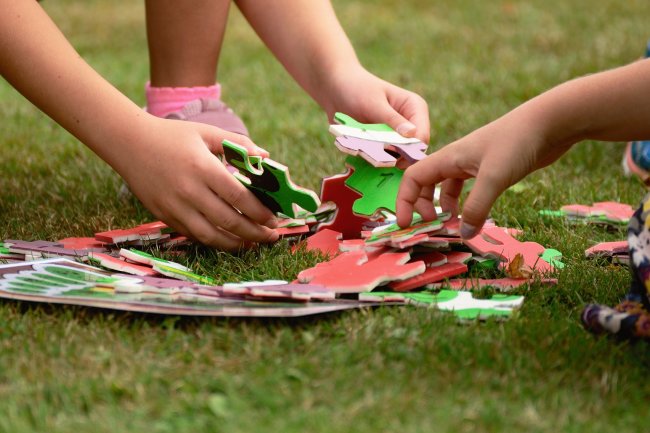Understanding Concepts
6 Tips To Introduce Collaborative Learning To Kids
- Dec 15, 2021
- 0
- 2545

As the saying goes, ‘we all do better when we work together’. Teamwork helps us reach our goals quicker and more effectively. But oddly enough, we rarely ever apply it to the learning process. This is why parents and tutors need to understand the importance of collaborative learning, where children can learn in groups to solve problems, complete assignments and understand concepts.
Collaborative learning exercises - peer workshops, collaborative exploration tasks, group presentations, and conversation gatherings - are significant parts of an interactive classroom, as they promote dynamic learning and a two-way communication process. Let’s take a look at how we can incorporate these exercises to improve learning for children.
Making It Easier for Children to Collaborate With Each Other
Now that you’ve realised the need for collaboration between students, here are a few tried and tested methods to encourage them to work in teams, rather than individually:
1. Let Them Teach
The best way for a child to learn something is to teach it. So, ask your children to learn a topic and then explain it to their friends. By instructing their peers, children get the opportunity to revise what they’ve studied and improve their own understanding of a particular topic.
2. Establish Clear & Measurable Learning Objectives
You need to tell your children what to expect from a collaborative experience in a clear manner. This will help them understand how collaboration can help them learn better, consequently motivating them to put more effort into the activities. These objectives will also help inform your strategies to promote collaborative learning experiences.
3. Give Students Enough Time
Be sure to give your children enough time for collaboration. Put yourselves in their shoes and try to figure out how long they would take to finish a particular assignment. If you’re conducting the exercises online, add five or ten minutes to the total time, so that you account for technical difficulties. Also, try to prepare an agenda well before class and allot a specific time slot for each activity that you want to conduct.
4. Build Rapport
Collaborative learning is a great way to foster a sense of community among children. One of the most important prerequisites for a successful collaborative project is trust and teamwork. This can only happen if the children are familiar with each other. So conduct some fun icebreakers and encourage them to interact as much as possible.
5. Assign Group Roles
If you’ve given your students a relatively challenging assignment, then it only makes sense to assign a role to each child. For example, if you have asked them to write a book review on Shakespeare’s ‘As You Like It’, ask them to choose their roles in the project - reviewer, factchecker, proofreader, designer etc. This will help them get better clarity on what they need to do and how to prepare.
6. Encourage Mid-Sized Groups
If your collaborative learning groups are too small, there may be a risk of limited diversity and perspective. However, if it is too big, chances are that all the members of the group won’t actively participate. So, the best course of action is to keep the groups mid-sized. Four to five children in each group would be ideal.
Collaborative learning encourages participation and makes children more open to constructive criticism. With this technique, children get an opportunity to discuss and develop new ideas together. If you want more tips on how to encourage collaboration among children, reach out to our team, so that we can help you out!
Add Comment
Related Blogs

Understanding Concepts
4 Reasons Why Skill-Based Learning Is Important For Students
- James Coop...
- Mar 14, 2022
- 0
- 10994

Understanding Concepts
4 Easy Ways To Combat Information Overload When You've Missed Out On S...
- Natasha Di...
- May 25, 2022
- 0
- 1812
Popular Blogs

Tips for Educators
3 Tips To Apply Classical Conditioning In Classrooms
- Natasha Di...
- Apr 25, 2022
- 0
- 21505

Understanding Concepts
4 Reasons Why Skill-Based Learning Is Important For Students
- James Coop...
- Mar 14, 2022
- 0
- 10994

For Parents
Everything You Need To Know About STEAM Education As A Parent
- James Coop...
- Mar 1, 2022
- 0
- 10780











